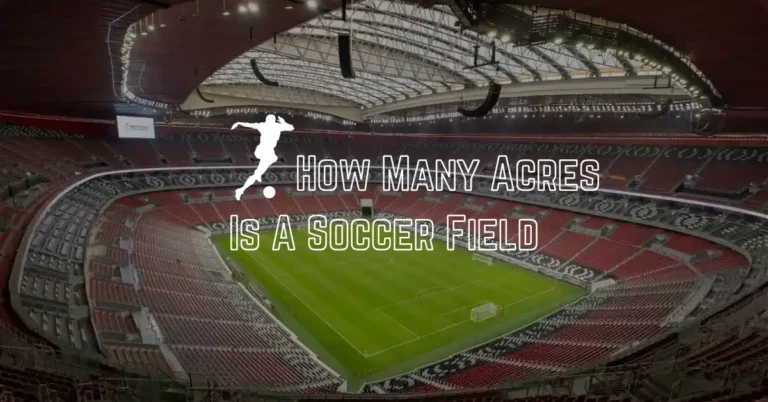3-5-2 Formation With Strengths And Weaknesses
The 3-5-2 soccer formation is also known as the “3-at-the-back” formation. It is a very famous formation due to its balanced setup. The 3-5-2 formation is based on a solid control in the midfield.

The 3-5-2 formation was introduced between 1950s-1960s. It was initially employed by a few Italian clubs and the Italian national team. The formation truly gained visibility under Carlos Bilardo, who implemented it with great success for the Argentina team that won the 1986 World Cup.
This formation became a prominent feature in international soccer after the success of the Italian National Team under the coaching of Marcello Lippi in the 2006 FIFA World Cup.
Positions Of Players In 3-5-2 Formation

Defenders (3):
Three central defenders form the heart of the defense. They are tasked with marking attackers and intercepting passes. The central defender in the middle often acts as a sweeper, providing cover behind the other two.
Midfielders (5):
Two wing-backs are hybrid defenders and attackers. They need to be comfortable defending against wingers. The three central midfielders control the midfield area. They win tackles, distribute the ball, and support both attack and defense.
Striker (2):
The two strikers lead the line in attack. They are responsible for scoring goals, creating chances for each other, and stretching the opposition defense.
Optimizing The 3-5-2 Formation

The 3-5-2 formation is a versatile tactical setup that strategically deploys three solid center backs to form a strong defensive line, providing a stable foundation.
The central midfield trio serves as the engine room, with one midfielder playing centrally, flanked by two others who balance defensive and offensive duties. Two wing-backs offer width in attack and support defensively, seamlessly transitioning between defensive and midfield roles.
The two strikers up front complement each other, with one acting as a target player and the other making dynamic runs, creating a potent attacking force.
This formation excels in controlling the midfield, exploiting wide areas, and maintaining defensive solidity, making it adaptable to various playing styles and providing a platform for both offensive creativity and defensive flexibility.
Strengths of the 3-5-2 formation

Solid Defensive Structure:
The 3-5-2 offers a solid defensive setup with three central defenders, making it difficult for the opposition to penetrate the defensive line. The wide defenders can also drop back when necessary, providing additional defensive support.
Midfield Dominance:
With five midfielders, this formation allows a team to control the midfield effectively. This dominance can lead to greater possession, control over the pace of the game, and the ability to dictate play.
Versatile Attack:
The two forwards in the 3-5-2 work in tandem, supporting each other and the midfield. This versatility in attack can lead to a well-balanced offensive strategy, with multiple players capable of scoring goals.
Wing Play:
The formation’s wide midfielders can provide width to the team’s attack. They can deliver crosses into the box, stretch the opposition’s defense, and create goal-scoring opportunities from the flanks.
Compactness:
The formation encourages a compact team shape, making it harder for the opponent to find spaces between the lines. This can frustrate the opposition’s attempts to break down the defense.
See Also: 4-1-4-1 Formation
weaknesses of the 3-5-2 formation

Defensive Vulnerabilities:
While the 3-5-2 provides a solid defense, it can be vulnerable to quick and skillful attackers. The wide defenders often have dual roles and may struggle to defend effectively while supporting the attack.
Pressure on Midfielders:
The midfielders in this formation carry a significant workload. They are expected to cover large areas of the pitch, which requires high stamina and tactical awareness. Opponents can target the midfielders with relentless pressing to disrupt play.
Lack of Wide Coverage:
The 3-5-2 may lack width in attack, especially when the wide midfielders are occupied defensively. This can limit the team’s ability to stretch the opponent’s defense and exploit the flanks.
Dependency on Wing Backs:
Success in the 3-5-2 often depends on the performance of the wing-backs. If they are unable to provide effective support in both attack and defense, the formation’s balance can be disrupted.
Adaptation Required:
Players need time to adapt to the specific roles within this formation. Coaches must invest in training and drills to ensure that players understand their responsibilities and can execute them effectively.
See Also: 3-4-3 Formation
Teams That Used 3-5-2 Formation Successfully

Italy (National Team -Marcello Lippi):
The 3-5-2 formation has been a staple for the Italian National Team. It was notably used in their successful campaign in the 2006 FIFA World Cup, where they secured the championship.
Atletico Madrid (Club Team):
Atletico Madrid, a Spanish club, has often deployed the 3-5-2 formation. This formation has contributed to their domestic and international successes, including La Liga titles and UEFA Super Cup victories.
Juventus (Club Team):
This formation helped Juventus to win the UEFA Champions League with a solid defensive structure and strong midfield provided.
Netherland (National Team – 1998 World Cup):
The Netherlands national team, under manager Guus Hiddink, used the 3-5-2 formation effectively during the 1998 FIFA World Cup. The team reached the semi-finals.
Chelsea (Club Team – Antonio Conte Era):
Chelsea, under manager Antonio Conte, achieved Premier League success with the 3-5-2 formation during the 2016-2017 season.
See Also: 5-4-1 Formation
FAQs
Yes, it is a good formation, but the effectiveness of the 3-5-2 formation depends on the team’s playing style, personnel, and tactical approach.
In a 3-5-2 formation, deploy three center-backs, use wing-backs for width, employ a central midfield trio, and have two strikers up top, fostering a balanced and flexible playing style.
In a 3-5-2 formation, the numbers refer to three defenders, five midfielders, and two forwards.
The 3-5-2 formation is employed for its balance between defensive solidity and attacking flexibility, utilizing three center-backs, five midfielders, and two forwards to provide both defensive cover and offensive support.
In a 3-5-2 formation, pressing is executed by engaging opponents high up the pitch with coordinated forward pressure, midfield support, and wing-back involvement to disrupt their build-up and force turnovers.
conclusion
The 3-5-2 soccer formation offers a unique and balanced approach to the beautiful game. It provides a solid defense, midfield dominance, and versatile attack, making it a favorite of many successful teams and coaches. However, it’s not without its challenges, and success with this formation requires careful planning and training. This formation really helps to win the match if the team has a better strategy and planning to use this formation.







